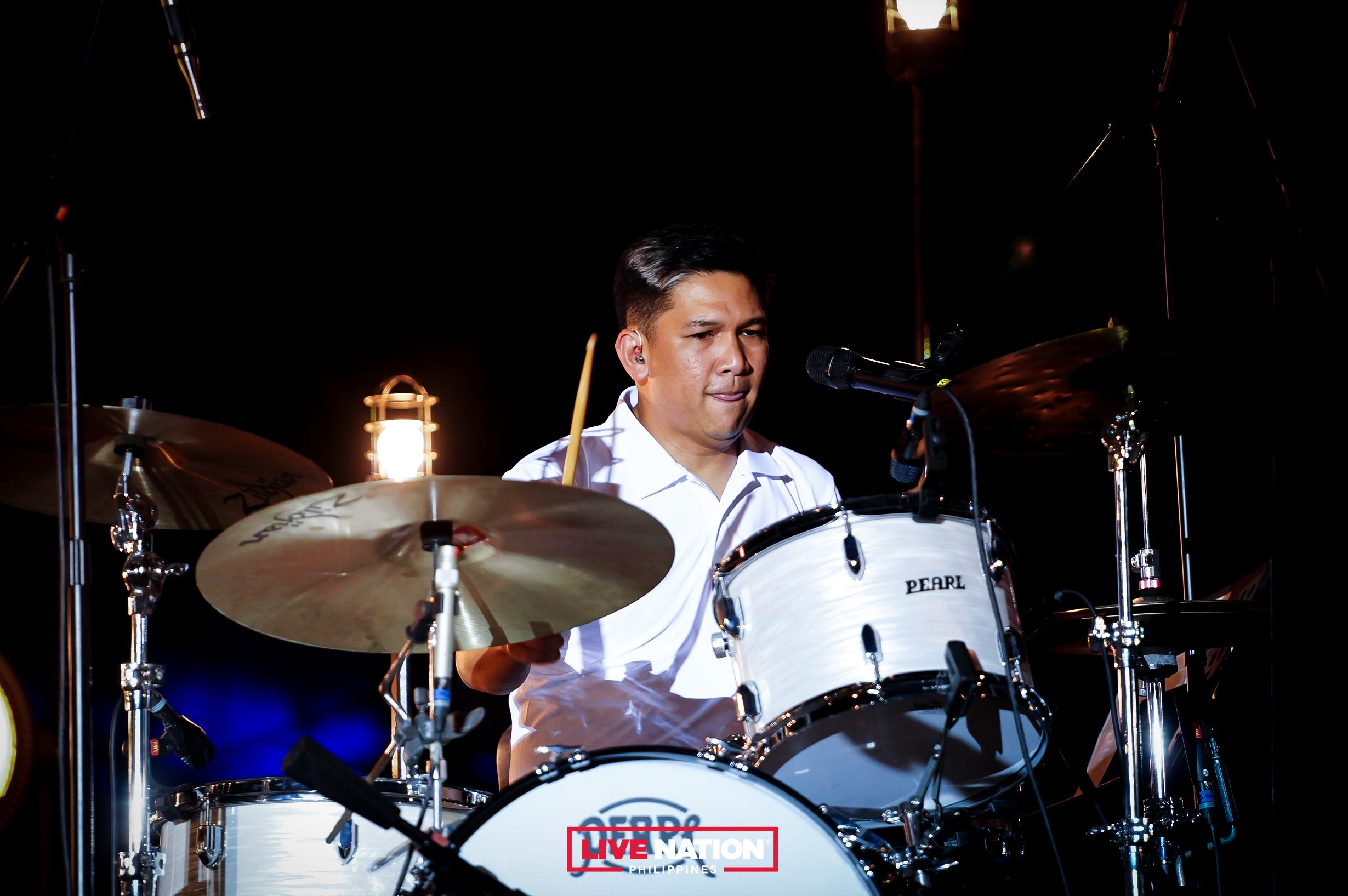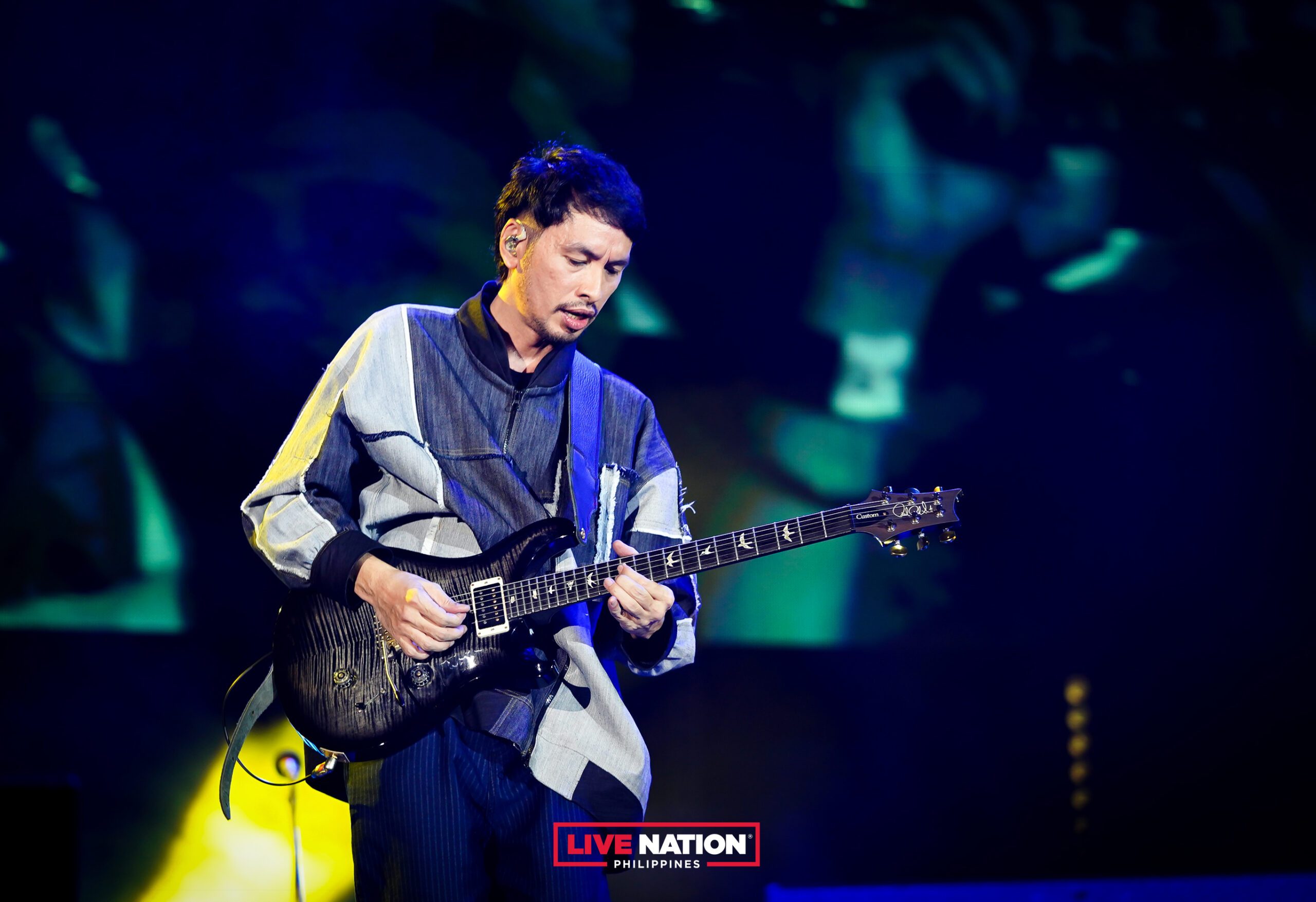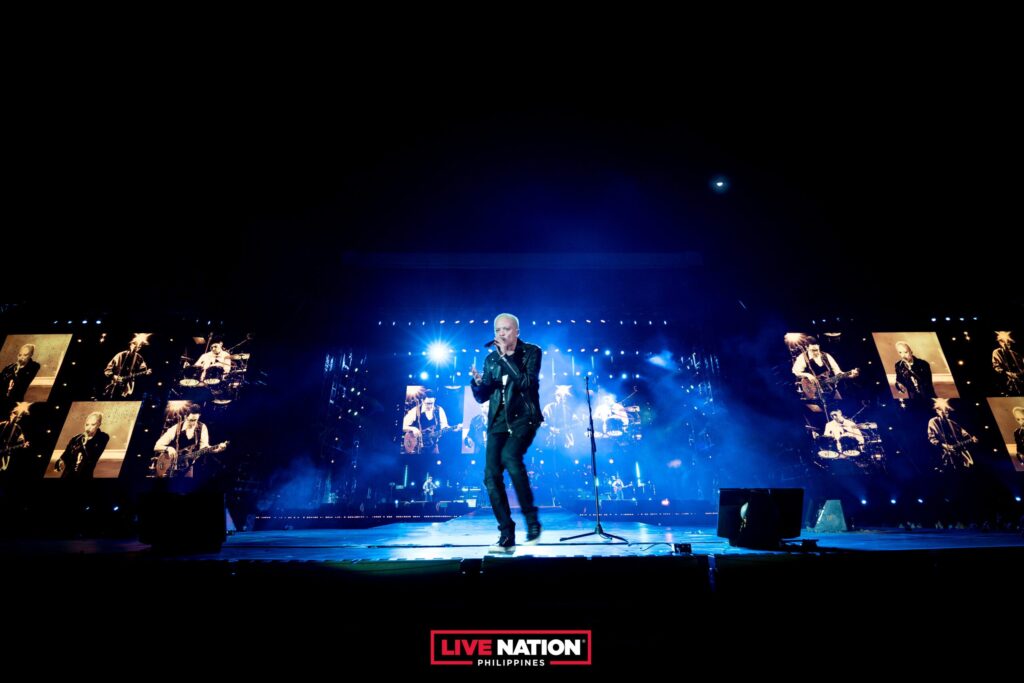The Rivermaya “reunion” show – quotes in deference to the still-active trio that continues to write and perform under that name – was truly something else. The sound was punchy, the visuals tasteful, and the “classic” quartet’s vigor palpable for the entirety of the just-under-three-hour performance.
No one can argue with nostalgia; nostalgia is like an Instagram filter that casts everything in a way more interesting light. And that filter was dialed to max even before Bamboo Mañalac, Rico Blanco, Mark Escueta, and Nathan Azarcon took the stage a little past 8 pm Saturday (February 17) at the SMDC Festival Grounds.
Their loyal fans were prepared to like everything with zero reluctance, and, had the foursome simply gone through the motions, everyone would have still eaten from the palms of their hands. Which is why kudos are due to the guys, because “going through the motions” clearly wasn’t the order of the day.
Delay- and reverb-riddled textures punctured the charitably windy night, swelling into the opening notes of deep cut “Monopoly.” It was a brave choice for an intro – a slow burn rather than an in-your-face bang – and one that, along with pick-up number “Kung Ayaw Mo, Huwag Mo,” would spell the tenor of the entire night.
That tenor is, of course, the tenor of constraint: the main constraint being that, technically, this lineup only wrote, recorded, and performed together for the duration of three albums: 1994’s Rivermaya (along with guitarist Perf de Castro), 1996’s Trip, and 1997’s Atomic Bomb.
There are well-loved cuts from the band’s oeuvre that simply didn’t exist in this reality, and those obviously didn’t make the cut, save for two numbers: “Nerbyoso” from It’s Not Easy Being Green (1999) and “You’ll Be Safe Here” from Between the Stars and Waves (2003).

The former was special because Bamboo doesn’t actually sing on the record, and the latter was special because it’s evidence that the band still mattered beyond the “classic” era. There are way stronger post-Bamboo tunes, I feel, but it was a few days past Valentine’s, so Rico’s solo piano-driven performance of “You’ll Be Safe Here” was entirely called for.
And anyway, I only discuss timeline matters because diehards love to split hairs about who sang what, who wrote which, and who played guitar on this-and-that. I respect that – there are other music nerds who’d split much thinner strands of hair, if you catch my drift – but the real strength of the show wasn’t its loyalty to their canon.
In fact, it’s the contrary: it’s the ability to build on the bones of the past while filling those bones with fresh flesh and a brand-new body. It’s also the aptitude for keeping things kinetic enough that, even during non-singles, the audience is kept in rapt attention.
To illustrate: even with Blanco’s guitar cutting off during the first half of “Hinahanap-Hanap Kita,” it was still an easy shoo-in as crowd-pleaser. It was one of the big ones on Atomic, after all. But because of the band’s commitment to delivering a take-no-prisoners show, even lesser-known tunes like “Princess of Disguise” and “Ballroom Dancing” – a Britpop-flavored rocker and a tango-tinged dancehall banger, respectively – are imbued with a gravity they previously didn’t enjoy.

The reunion was a beautiful negotiation of musicianship and fan service. Escueta’s inspired drumming – and surprise turn at the mic, singing a verse on the Blanco-helmed “Panahon Na Naman” – was a joy to behold. Azarcon, meanwhile, was MVP material – I’ve been telling people this over the weekend – and he was clearly having the best time: dancing and prancing and sprinting and killing it.

Mañalac was a rabid hybrid of frontman and hypeman, a singer for whom hyperbole is a dagger to wield proudly. Whether it’s oddball gems like “Sunny Days” or sure-shot hits like “Ulan” – which to my mind suffered from an unnecessary rearrangement, losing some of its bite, but no matter – Bamboo could be counted on to deliver the goods. He’s a reliable technician, but also an unshakable shaman who understands the importance of rallying a crowd.

Then there’s Rico Blanco, whose byline populates their best-loved material, and whose discomfort at taking on new roles in the past has been well-documented. In a 2017 Esquire story, he reiterates, “You have to understand that [Trip] was a documentation of me learning to play the guitar.” That’s a sweet sentiment to revisit at this juncture, because this show mirrors the pressures of that time, i.e., filling in the shoes of a more technical predecessor.
But however his pronouncements strike you – “I’m not a musician’s musician,” he told me in 2020 for an NME story, adding “If you don’t like me, nothing I ever do will make you like me” – he clearly wasn’t playing like it’s 1996. Occasional rough edges notwithstanding, he’s arguably Rivermaya’s most colorful guitar player, and his arrangement ideas unflaggingly err on the side of melody. The solo on “Kung Ayaw Mo, Huwag Mo” was like candy; the contentious-but-triumphant fretwork on “214” lilting; and the harder-edged take on “Elesi” rousing.
Dude can play, hard stop.

And man, can he sing, too. One of this lineup’s greatest strengths is how Blanco and Mañalac’s individual styles have always warred and sparred, but also gelled and glued. That contrast peaks in songs like the aforementioned “Elesi” and “Kung Ayaw Mo, Huwag Mo,” but also on tunes like “Hilo” and “Kundiman,” where the tension is more marked during call-and-response moments.
Rivermaya also enjoyed a leg up, truth be told, with the baton of Mel Villena casting its fairy dust. He did arrange strings for Atomic songs in the past – most notably on Azarcon-penned tearjerkers “If” and “Luha” – but hearing those arrangements played live (and mic’d beautifully, too) was life-affirming.
The understated visuals also deserve praise, with the video-wall projections favoring monochrome renders that cloaked the guys in a dreamlike haze. That said, though, the theatrics towards the end – the Higantes-style dolls that accompanied “Mabuhay,” the drum battery that played along to “Awit ng Kabataan,” the fireworks that punctuated “214,” the amped-up string work on “Himala,” the fanfare during closing number “Kisapmata” – were a stirring way to cap an already-riveting evening.

The snags mid-show – chief among them the audio cutting off completely during “20 Million,” forcing the band to do it over – were addressed with class. At some point, the boys descended into the crowd to high-five friends and supporters, omitting the anxiety a quarter-hour interruption would have otherwise caused.
If we can all agree that Rivermaya is an evolving cavalry – with this particular quartet being the most successful sub-troop – it’s easy to picture a follow-up show focused on a different era. But for a first local turn for Live Nation, it’s a daring mount. A beloved band who delivered their most recognizable tunes, but also took a spirited chance on deep cuts – the sum total amounting to a nostalgia reel, a postcard, a shared prayer. – Rappler.com

